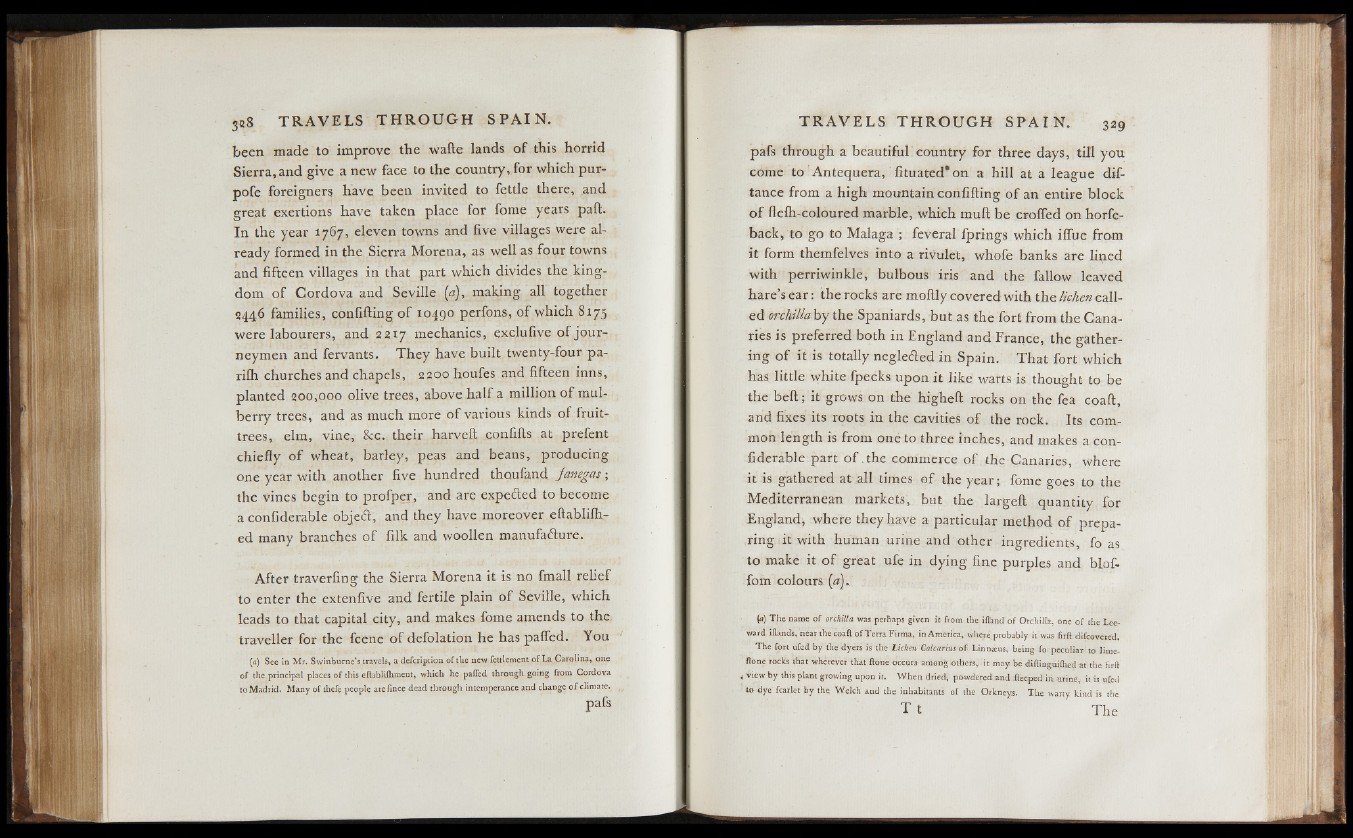
been made to improve the wafte lands o f this horrid
Sierra, and give a new face to the country, for which pur-
pofe foreigners have been invited to fettle there, and
great exertions have taken place for fome years pail.
In the year 1767, eleven towns and five villages were already
formed in the Sierra Morena, as well as four towns
and fifteen villages in that part which divides the kingdom
of Cordova and Seville (a), making all together
2446 families, confifting o f 10490 perfons, o f which 8175
were labourers, and 2217 mechanics, exclufive of journeymen
and fervants. They have built twenty-four pa-
rifh churches and chapels, 220ohoufes and fifteen inns,
planted 200,000 olive trees, above half a million of mulberry
trees, and as much more of various kinds of fruit-
trees, elm, vine, 8cc. their harveft confifts at prefent
chiefly of wheat, barley, peas and beans, producing
one year with another five hundred thoufand fanegas ;
the vines begin to profper, and are expelled to become
a confiderable objeift, and they have moreover eftabliih-
ed many branches of filk and woollen manufafture.
After traverfing the Sierra Morena it is no fmall relief
to enter the extenfive and fertile plain of Seville, which
leads to that capital city, and makes fome amends to the,
traveller for the fcene o f defolation he has paifed. You
(a) See in Mr. Swinburne’s travels, a defcripuon of the new fettlement of La Carolina, one
of the. principal places o f this eftabliibment, which he paffed through going from Cordova
to Madrid. Many of thefe people arefince dead through intemperance and change of climate.
pafs
pafs through a beautiful country for three days, till you
come to Antequera, fituated*on a hill at a league dif-
tance from a high mountain confifting of an entire block
o f fleih-coloured marble, which muft be crofted on horfe-
back, to go to Malaga ; feveralfp rings which iflue from
it form themfelves into a rivulet, whofe banks are lined
with perriwinkle, bulbous iris and the fallow leaved
hare’s ear: the rocks are moftly covered with the lichen called
orchilla by the Spaniards, but as the fort from the Canaries
is preferred both in England and France, the gathering
o f it is totally neglefled in Spain. That fort which
has little white fpecks upon it like warts ia thought to be
the beft; it grows on the higheft rocks on the fea coaft,
and fixes its roots in the cavities o f the rock. Its common
length is from one to three inches, and makes a confiderable
part o f the commerce o f the Canaries, where
it is gathered at all times of the year; fome goes to the
Mediterranean markets, but the largeft quantity for
England, where they have a particular method of preparing
it with human urine and other ingredients, fo as
to make it o f great ufe in dying fine purples and blof-
fom colours [a).
(0) The name o f orchtlla was perhaps given it from the iiland o f OVchillk, one o f the Leeward
iilands, near the coaft of Terra Firma, in America, where probably it was firft difcovered.
The fort ufed by the dyers is the Lichen Calcarius o f Linnzeus, being fo. peculiar' to lime-
ftone rocks that wherever that ftone occurs amonh others* it may be diftinguiihed at the firft
V v^ew by this plant growing upon it. When dried-, powdered and. fteeped iii urine, it is ufed
to dye fcarlet by the Welch and the inhabitants of the Orkneys. The warty kind is the
T t The